Today I invite you to Austria. What you see below is a panorama of Vienna. I reached the Kahlenberg hill, I will tell you a little more about this place, it is an important location for Poland.
Dzisiaj zapraszam Was do Austrii. To co widzicie poniżej to panorama Wiednia. Dotarłem na wzgórze Kahlenberg, opowiem trochę więcej o tym miejscu, jest to ważna lokalizacja dla Polski.
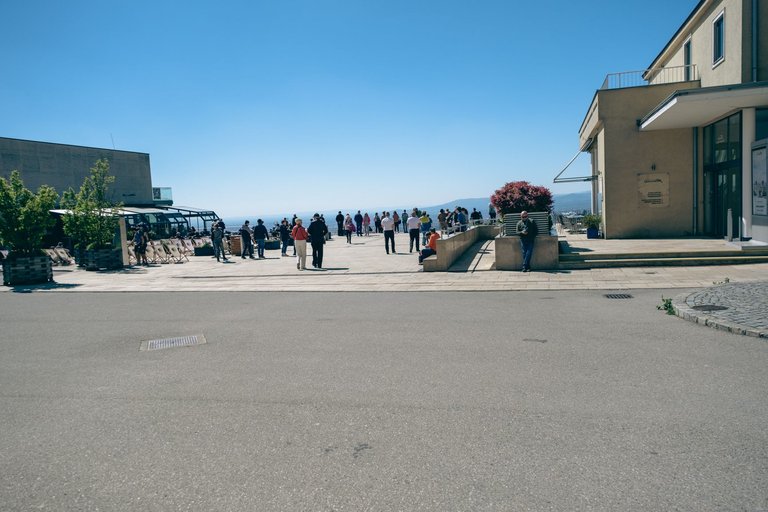
Kahlenberg is a hill in Vienna that offers very beautiful views of the city skyline and the surrounding mountain ranges. From this vantage point you can admire a vast view of Vienna, numerous parks and the Danube River. You can also see the hills of the Vienna Forest on the horizon. The photos from the hill are not perfect, I was there in the morning, and there is a slight fog visible.
Kahlenberg to wzgórze w Wiedniu, które oferuje bardzo piękne widoki na panoramę miasta oraz otaczające je pasma górskie. Z tego punktu widokowego można podziwiać rozległy widok na Wiedeń, liczne parki i rzekę Dunaj. Na horyzoncie widać również wzgórza Lasu Wiedeńskiego. Zdjęcia ze wzgórza nie są idealne, byłem tam rankiem, i widoczna jest lekka mgła.
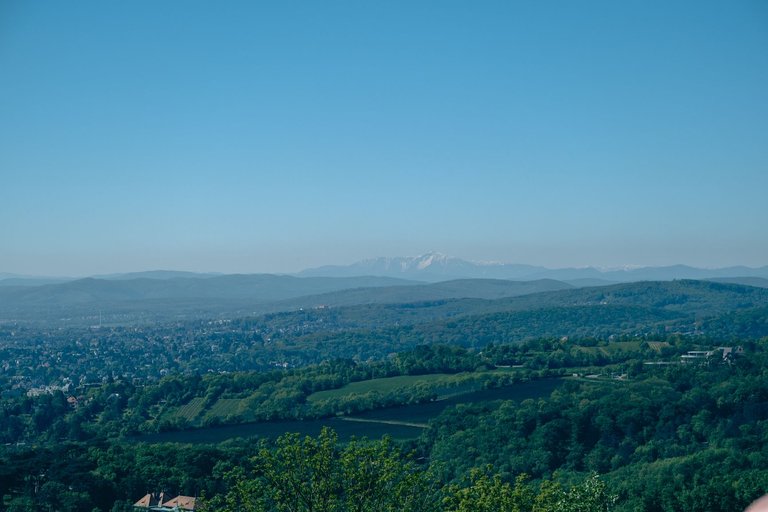

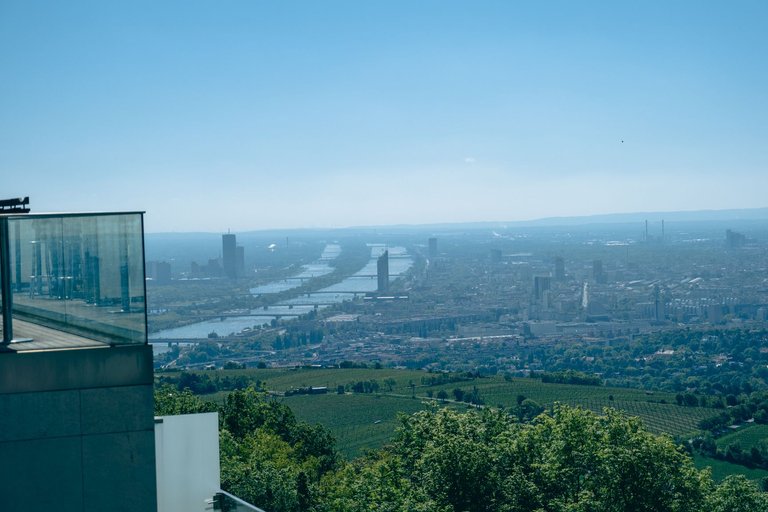
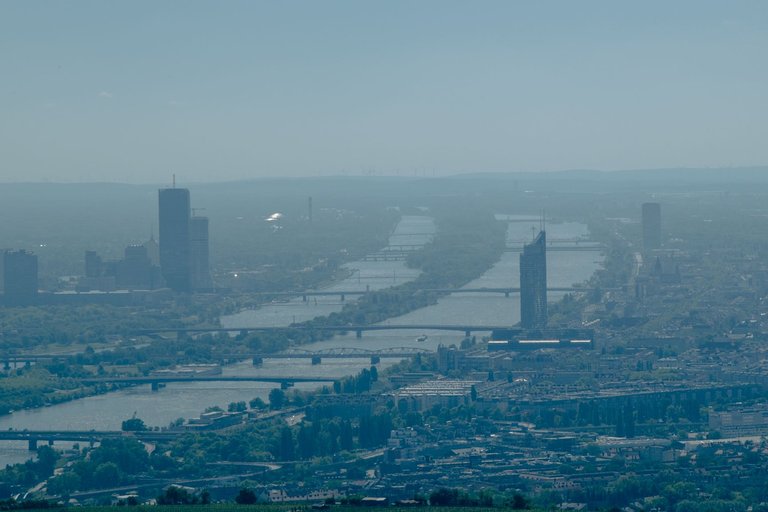
Kahlenberg has a long and rich history, dating back to the Middle Ages. The central place on the hill is the monastery. Emperor Leopold I Habsburg donated the hill area to the Camaldolese order, who founded this monastery. Kahlenberg gained in importance, becoming a place of pilgrimage and an important observation point for the defense of the city in ancient times.
Kahlenberg ma długą i bogatą historię, sięgającą średniowiecza. Centralnym miejscem na wzgórzu jest klasztor. Cesarz Leopold I Habsburg podarował teren wzgórza zakonowi kamedułów, którzy założyli ten klasztor. Kahlenberg zyskał na znaczeniu, stając się miejscem pielgrzymek oraz istotnym punktem obserwacyjnym dla obrony miasta w dawnych czasach.
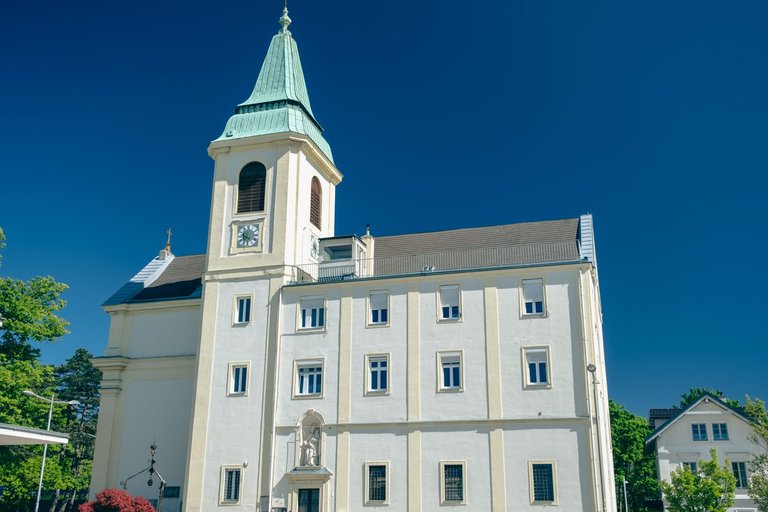
One of the most interesting places next to the monastery, which caught my attention (because it was located in a central place while walking to the observation deck from which I took the above photos) is a round building (probably a well) to which tourists attach padlocks. Of course, love ones dominate 🔒❤️
Jednym z ciekawszych miejsc obok klasztoru, która przykuła moją uwagę (ponieważ umiejscowiono ją w centralnym miejscu idąc na taras widokowy z którego zrobiłem powyższe zdjęcia) jest okrągła budowla (chyba studnia) do której turyści przyczepiają kłódki. Królują oczywiście te miłosne 🔒❤️
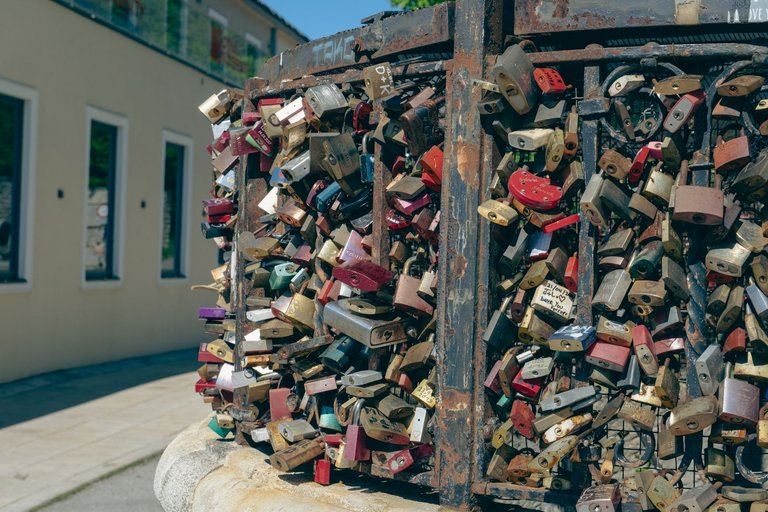
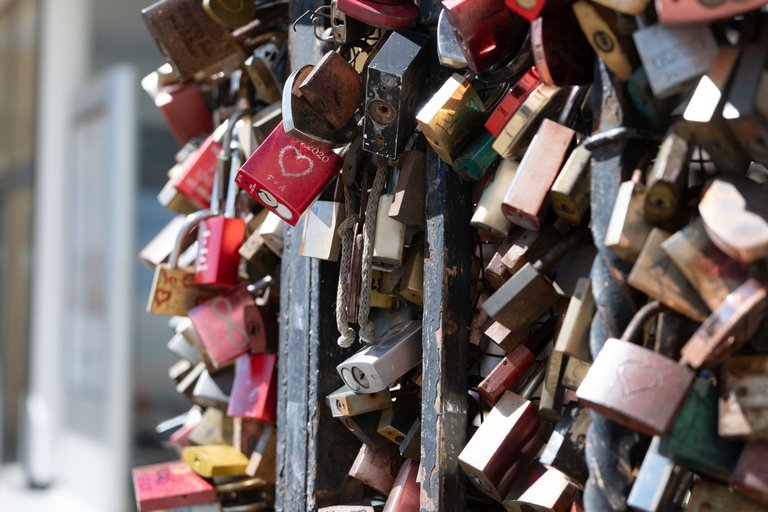
I mentioned that Kahlenberg is extremely important for Poland. This is due to the key role it played in the Battle of Vienna in 1683, where King John III Sobieski commanded the victorious Christian forces, stopping Ottoman expansion in Europe. Before the battle, Sobieski attended Holy Mass at Kahlenberg, which had great spiritual significance for the faithful and, above all, increased morale and willingness to fight. This place commemorates Sobieski's heroic actions and is a symbol of Polish courage and sacrifice in defense of Christianity and European civilization.
Below is a copy of the painting commemorating this event. It shows the King of Poland, Jan Sobieski, near Vienna, sending a message about the victory to Pope Innocent XI. The original painting was painted by Jan Matejko.
Wspominałem że Kahlenberg jest niezwykle ważny dla Polski. Jest tak ze względu na kluczową rolę, jaką odegrało w bitwie pod Wiedniem w 1683 roku, gdzie król Jan III Sobieski dowodził zwycięskimi siłami chrześcijańskimi, powstrzymując osmańską ekspansję w Europie. Przed bitwą Sobieski uczestniczył w mszy świętej na Kahlenbergu, co miało ogromne znaczenie duchowe dla wiernych a przede wszystkim podniosło morale i chęci do walki. Miejsce to upamiętnia bohaterskie działania Sobieskiego i jest symbolem polskiej odwagi oraz poświęcenia w obronie chrześcijaństwa i europejskiej cywilizacji.
Poniżej kopia obrazu która upamiętnia to wydarzenie. Widać na niej Króla Polski, Jana Sobieskiego pod Wiedniem który wysyła wiadomość o zwycięstwie papieżowi Innocentemu XI. Oryginalny obraz namalował Jan Matejko.
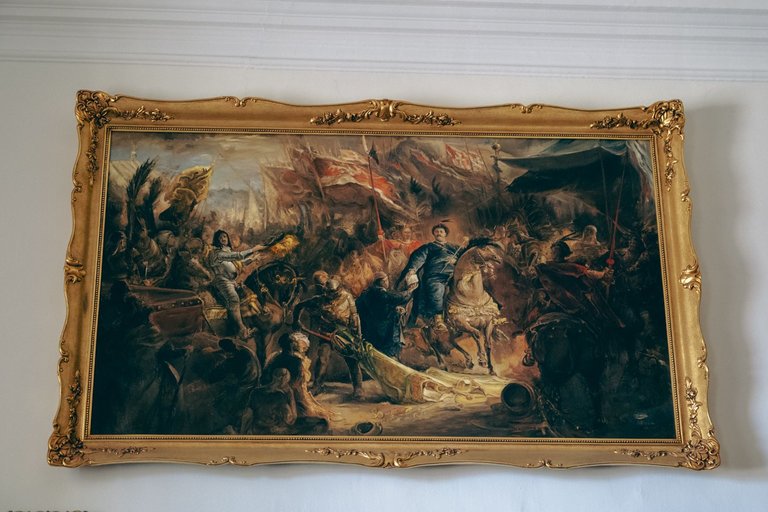
This is what the main altar looks like. This place has the rank of a Polish National Sanctuary, the church is dedicated to St. Józefa.
Tak wygląda główny ołtarz. To miejsce ma rangę Polskiego Sanktuarium Narodowego, kościół jest pod wezwaniem św. Józefa.
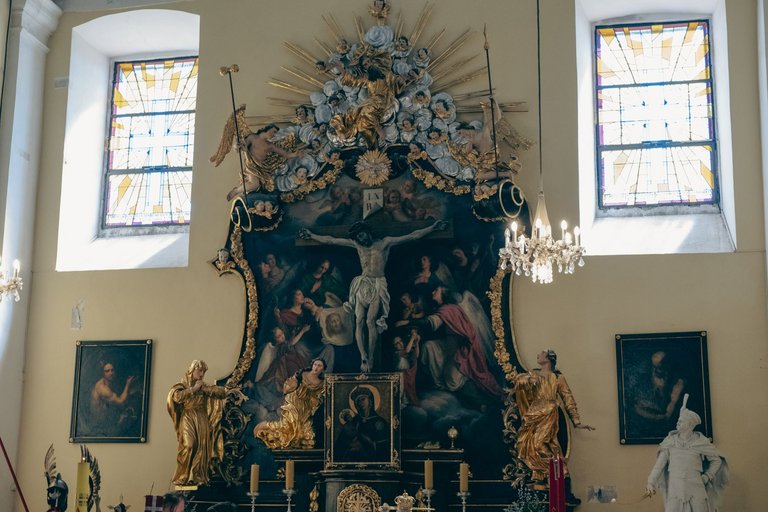
I also managed to get into the sacristy, I think it's a generally accessible place for visitors, but there was no one there at the time. On the left you can see huge furniture with paintings.
Udało mi się też dostać do zakrystii, chyba jest to ogólnie dostępne miejsce dla zwiedzających, ale wtedy nikogo tam nie było. Po lewej stronie widać ogromne meble z obrazami.
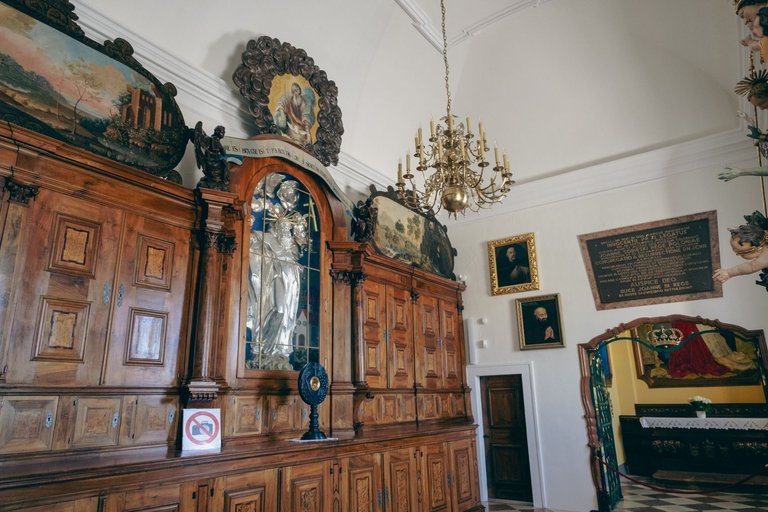
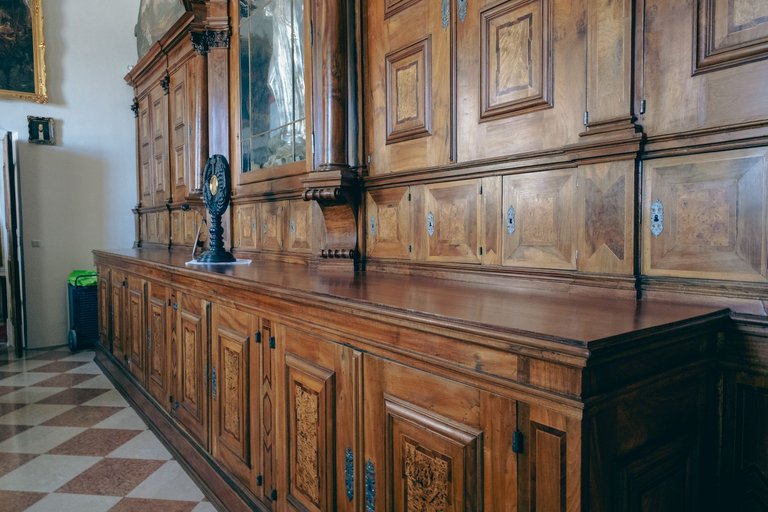

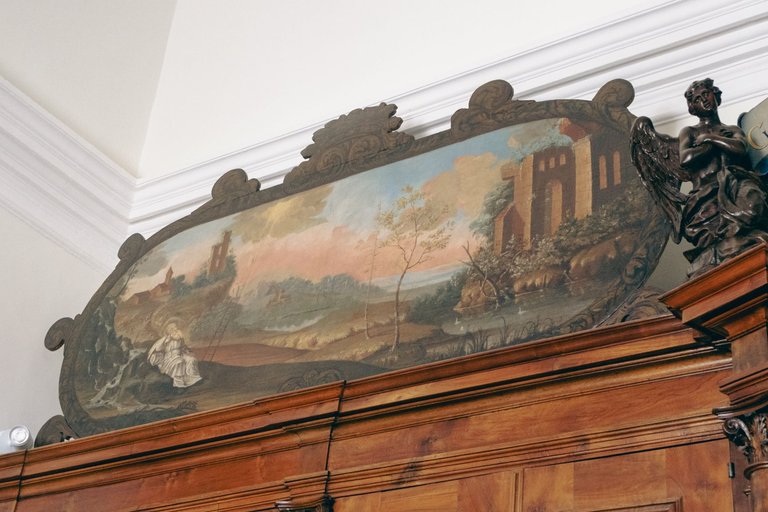 | 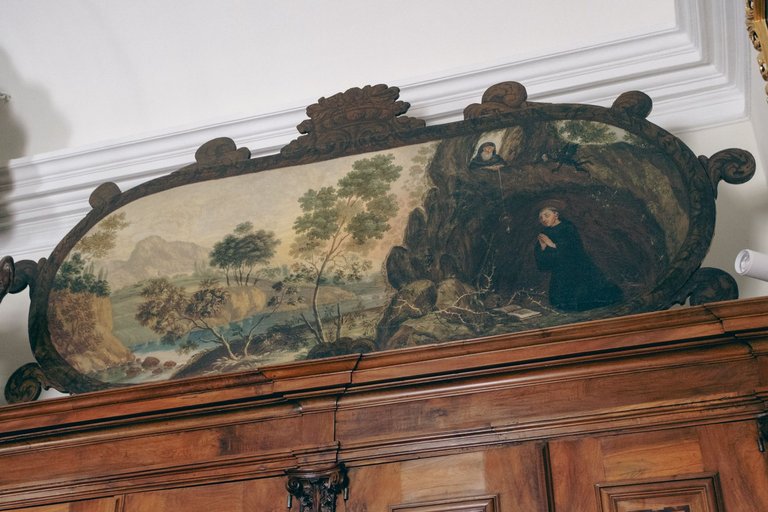 |
|---|
On the right side you can see interesting sculptures - I don't know what they symbolize, but I guess it's good and evil. Straight ahead is a room dedicated to the topic of the Pope. This is probably Pope Innocent XI praying to stop the army's attack on Rome.
Po prawej stronie widać ciekawe rzeźby - nie wiem co symbolizują, ale domyślam się, że jest to dobro i zło. Na wprost jest pomieszczenie, które jest poświęcone tematyce papieża. Zapewne jest to papież Innocentemu XI modlący się o zatrzymanie natarcia wojsk na Rzym.
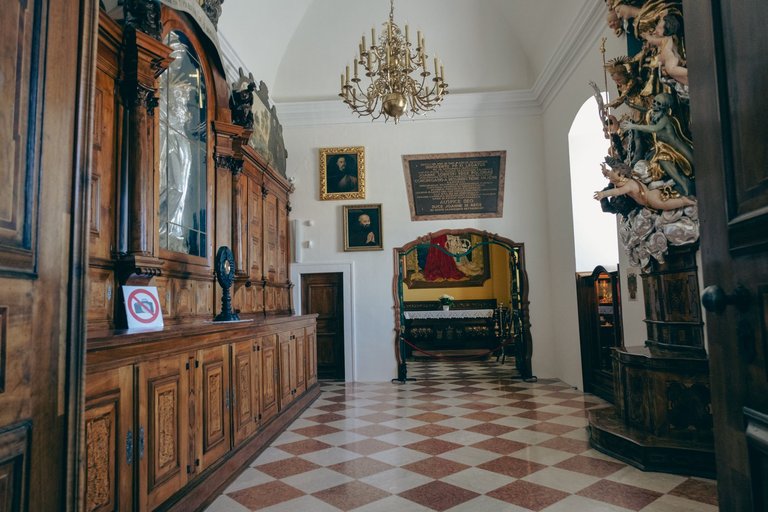
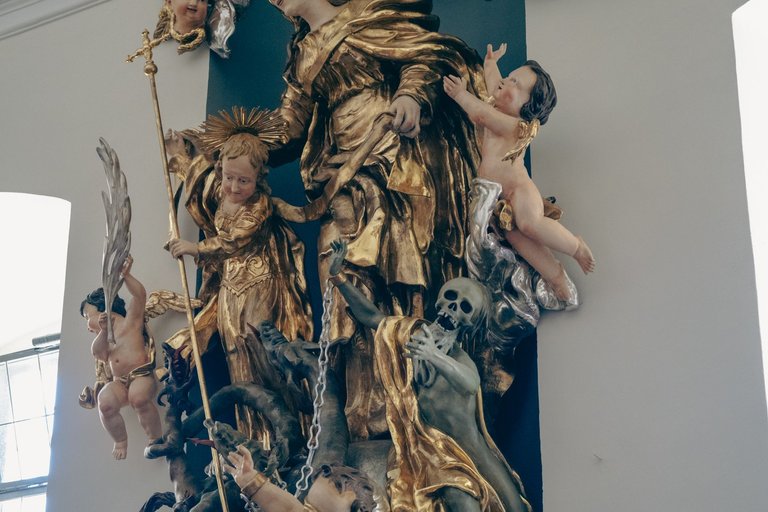
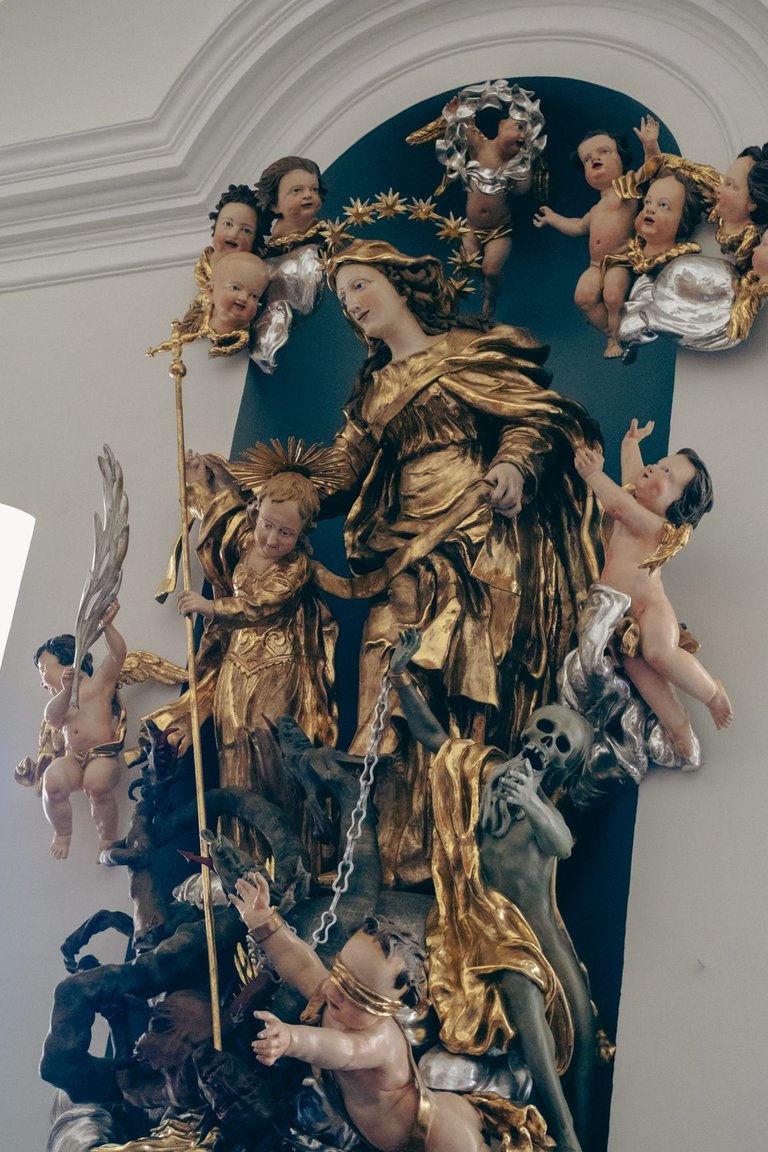
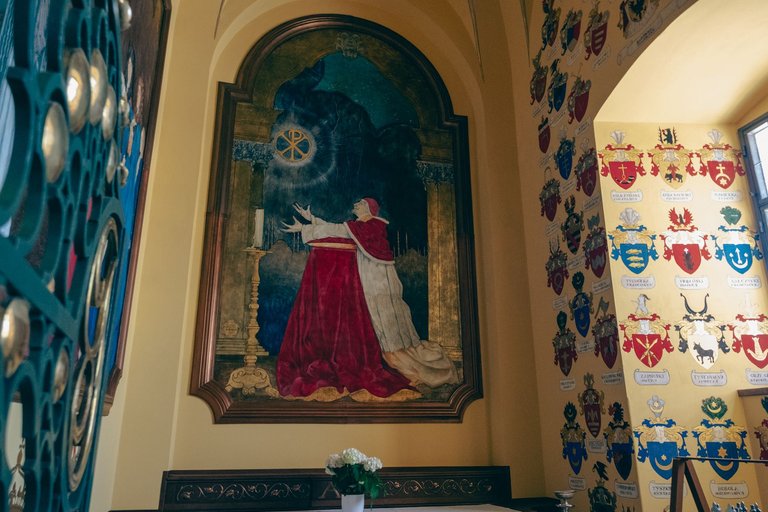
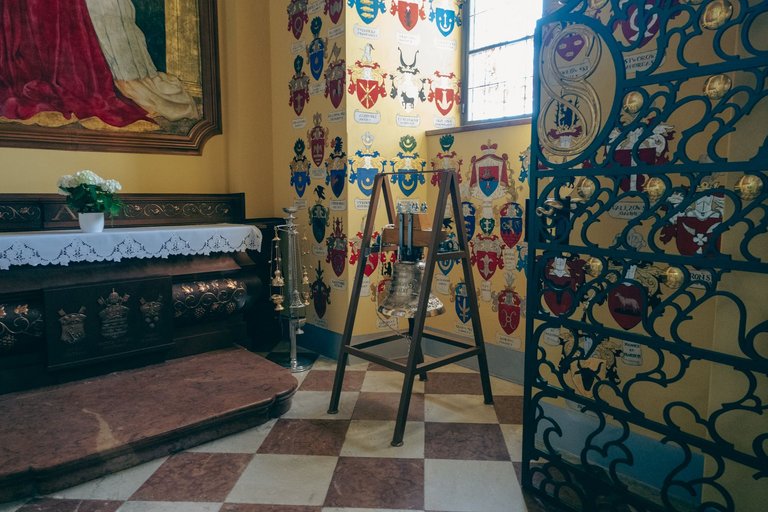
I recommend visiting this place 😉
📌 Kościół św. Józefa na Kahlenbergu
Am Kahlenberg 38, 1190 Wien, Austria - google maps
📸 Photo by @szejq | Fuji X | Lightroom

Congratulations, your post has been added to Pinmapple! 🎉🥳🍍
Did you know you have your own profile map?
And every post has their own map too!
Want to have your post on the map too?
The most amazing thing about these temples is the that you can feel the energy of peace as soon as get inside, you can appreciate all the historical sculptures and paintings that represents a great value for that city. Excellent photos
Been to Vienna two years ago so everything is quite familiar to me, but your post makes me miss being around those places :)
Wow, what a wonderful view. I love the padlocks all together, I think it looks super funny. Thank you for sharing ☺️